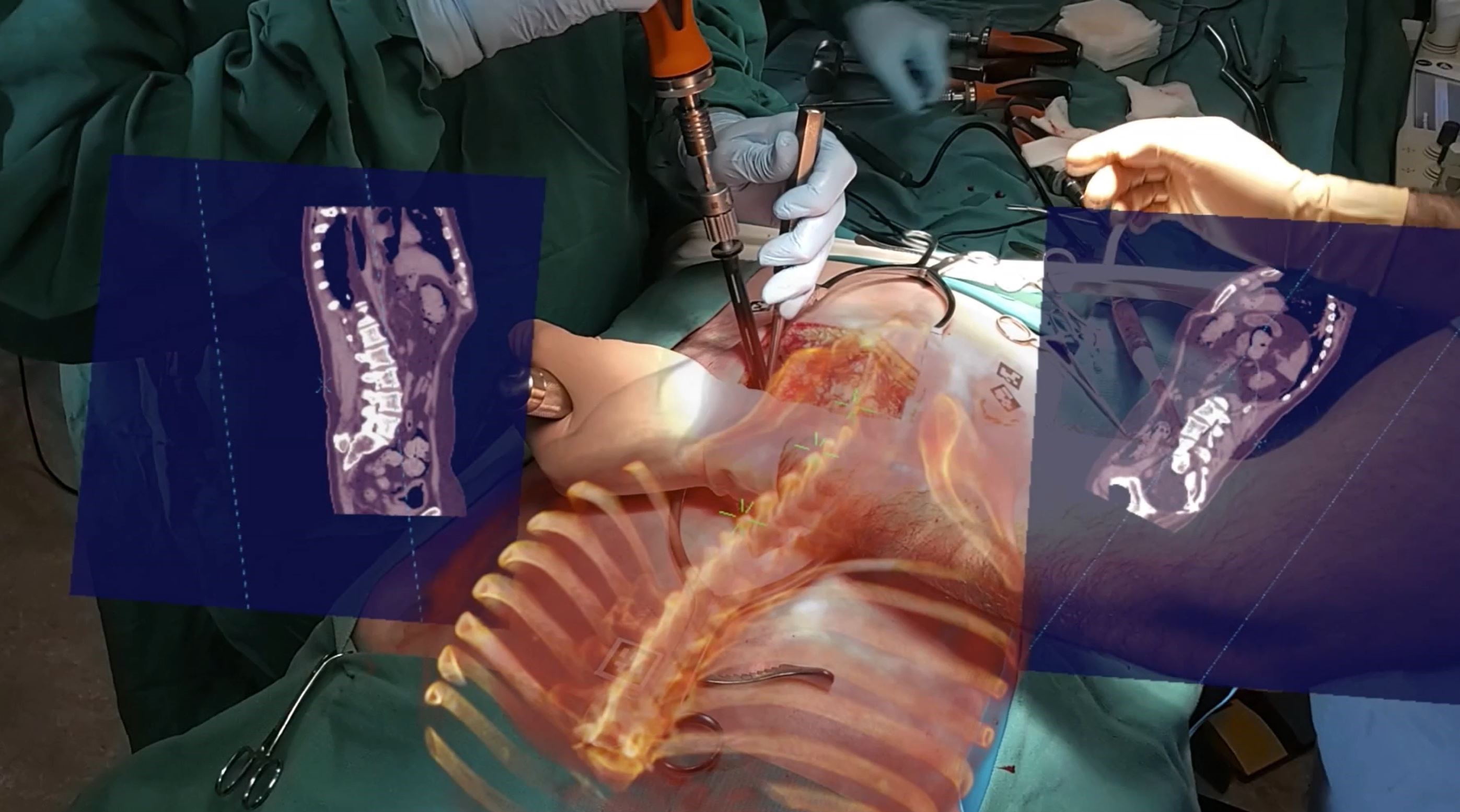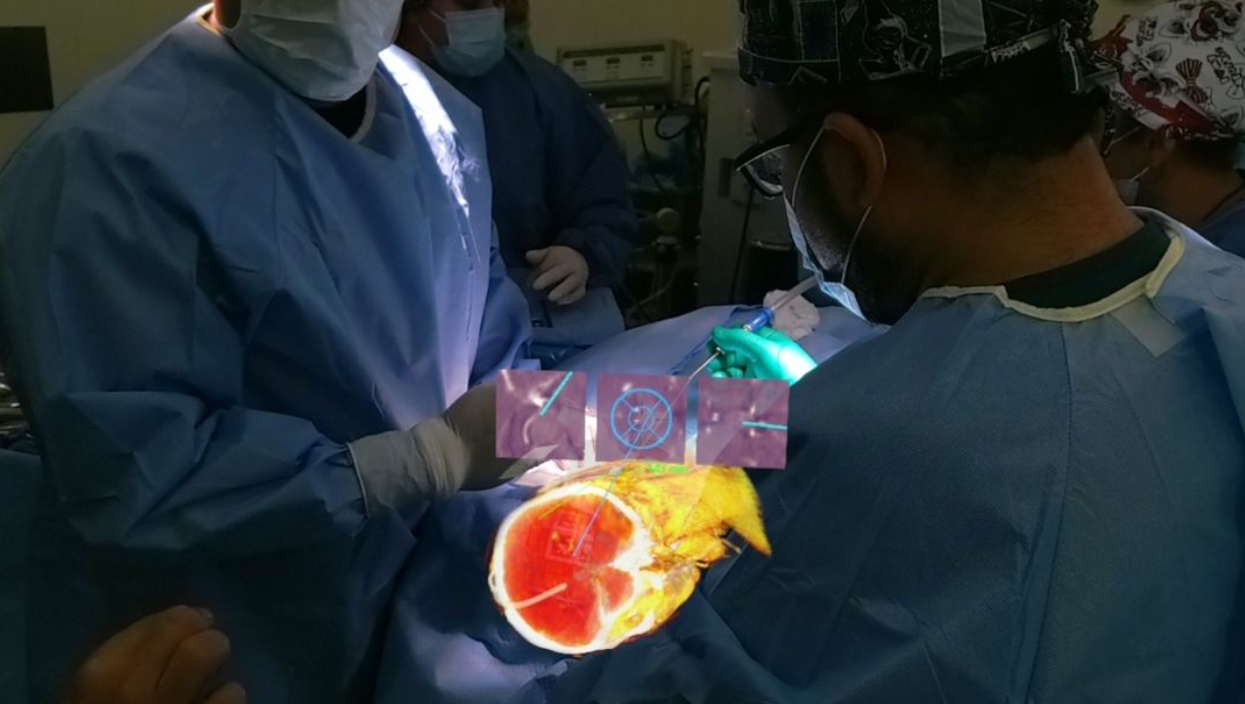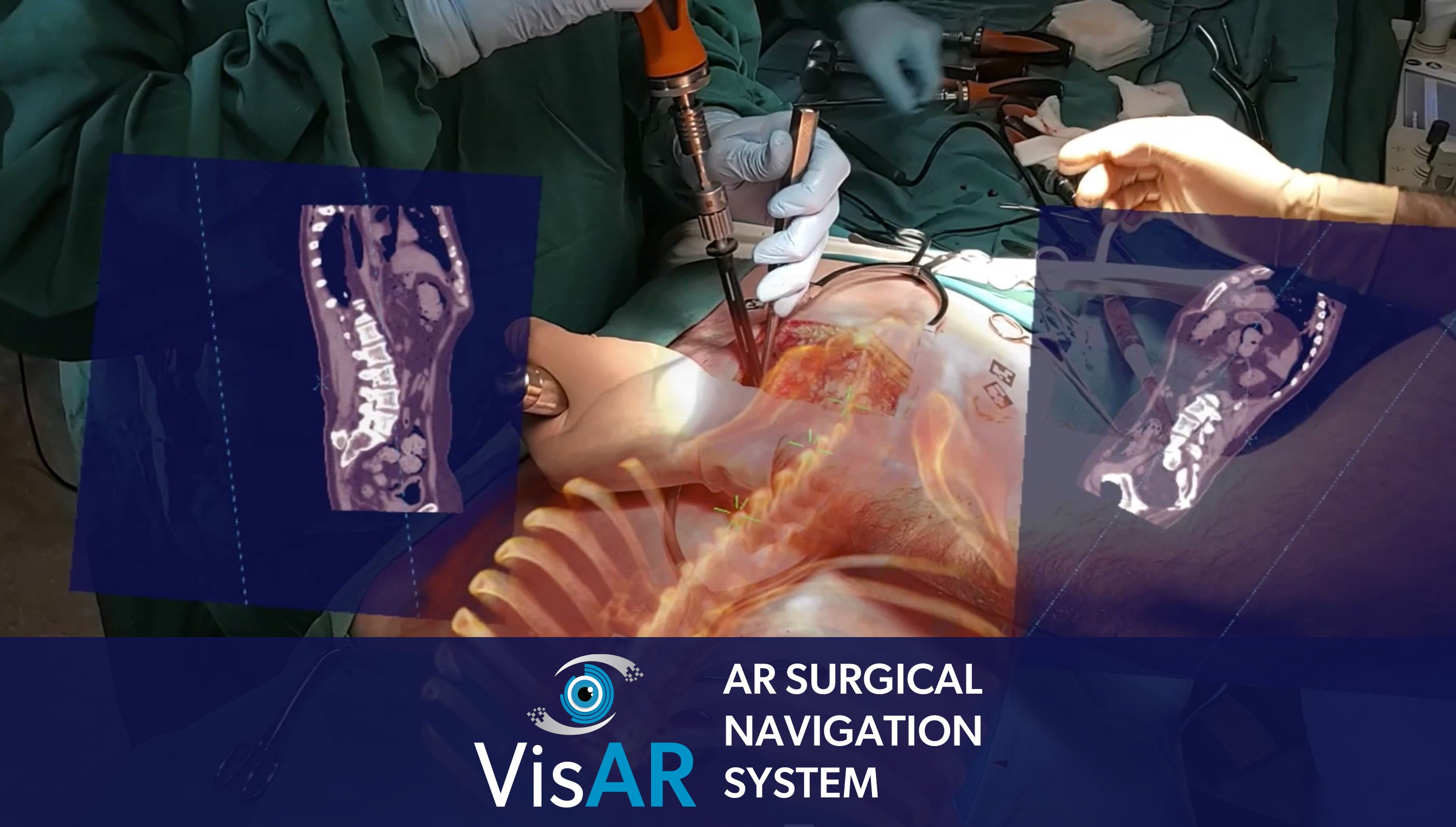Augmented Reality Spine Surgery Navigation for Pedicle Screw Insertion

Spine instrumentation and intraoperative target visualization have continued to improve over time. In 1943 Tourney reported the initial use of screws for fusing lumbosacral joints.1 This method experienced substantial failure rates.2,3 Boucher described the application of pedicle screws for laminectomy, spinal fusion, and spondylolisthesis with excellent results in 1959.4 With the introduction of fluoroscopy for intraoperative guidance in the early 1980s, physicians operated with visual guidance and fluoroscopy confirmation.5 The development of C-arm fluoroscopy and O-arm technology, coupled with stereotactic surgical stations, provided additional options for intraoperative surgical navigation.
As the use of these systems have increased, several limitations have emerged. Cumulative exposure to ionizing radiation is increasing as patient demand for minimally invasive spine surgery (MISS) accelerates and improved diagnostic procedures are brought online.6 There are sizeable capital costs for a combined O-arm and surgical station. These systems generally have a large operating room (OR) footprint and maintenance cost. Moreover, team training for both pre- and intraoperative coordination is substantial. The cumbersome and time intensive nature of many intraoperative spine guidance systems limits their widespread use and benefit for many patients. Augmented reality (AR) has several distinct advantages to traditional imaging for spine and instrumentation. The objective of this study was to demonstrate the accuracy of AR with off-the- shelf AR hardware for pedicle screw placement both in open and MISS procedures.
Read more about this study here.


